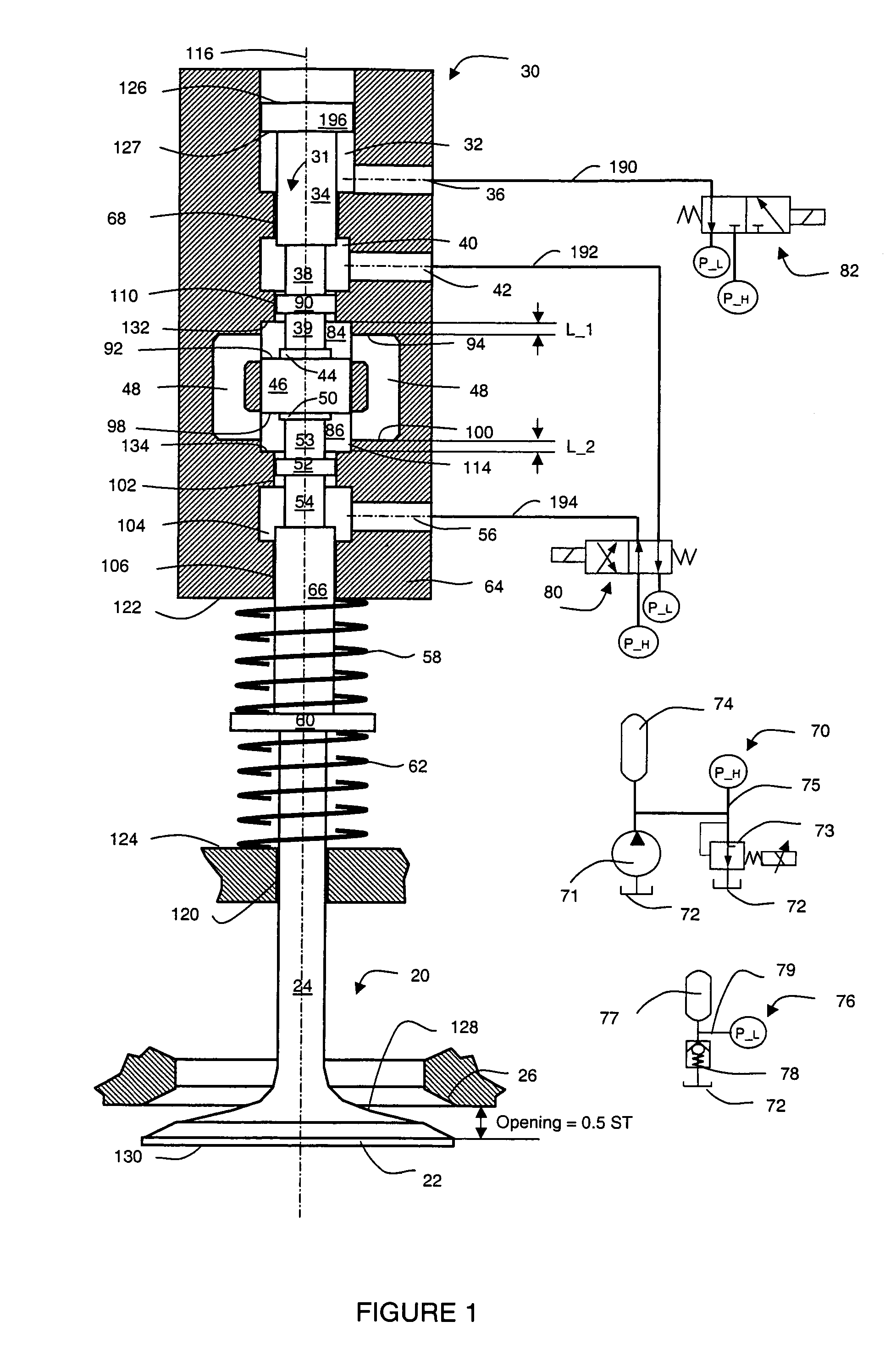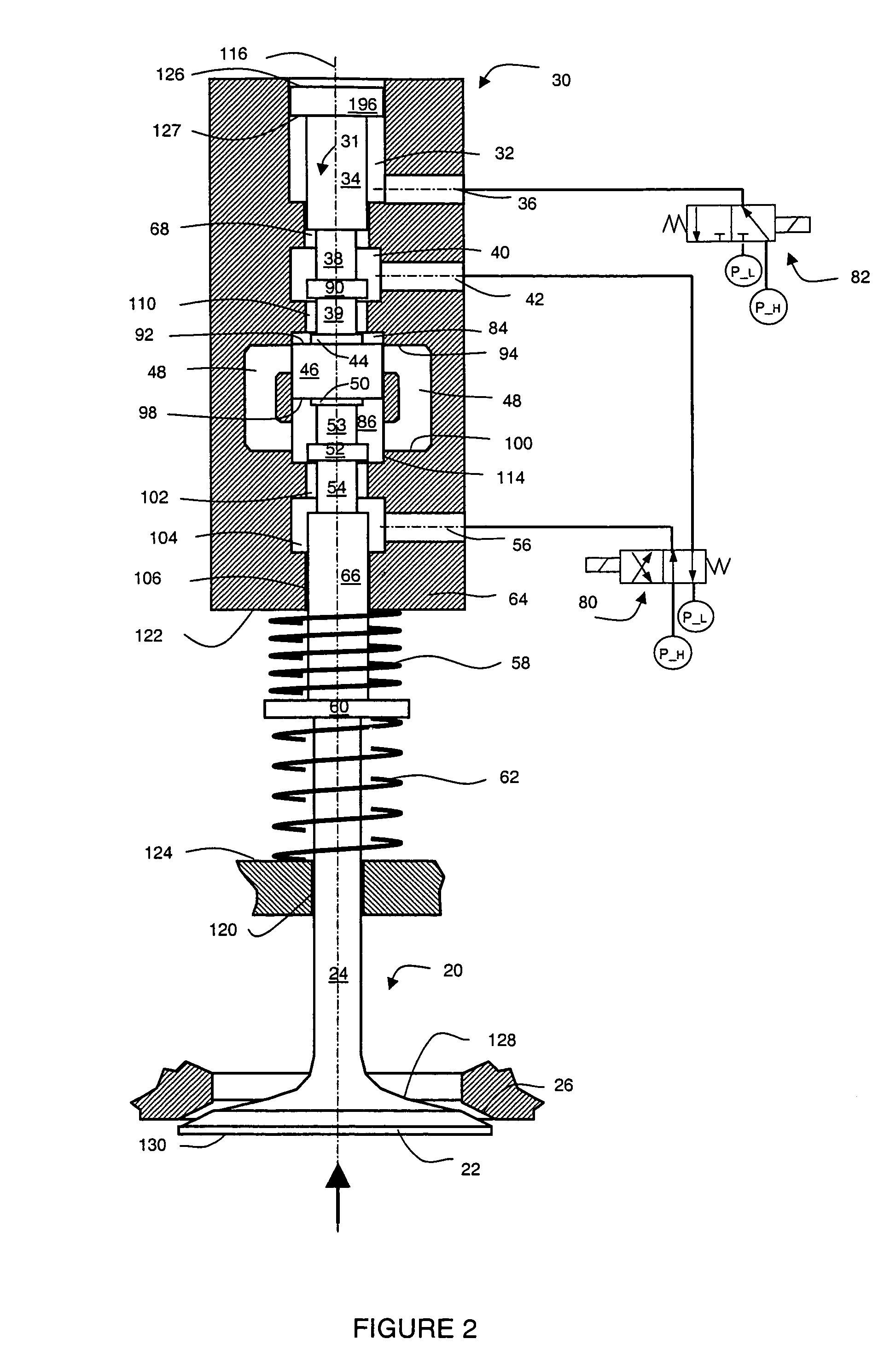Variable valve actuator
a valve actuator and variable technology, applied in the field of actuators, can solve the problems of limited ability to deal with high and/or variable cylinder air pressure, high electrical power demand, and inability or difficulty to control lift, etc., and achieve the effect of shortening the lift of the valve, efficient low load operation, and small lifting
- Summary
- Abstract
- Description
- Claims
- Application Information
AI Technical Summary
Benefits of technology
Problems solved by technology
Method used
Image
Examples
Embodiment Construction
[0034]Referring now to FIG. 1, a preferred embodiment of the invention provides an engine valve control system using two pistons, one or more bypass passages, and a pair of spring means. The system comprises an engine valve 20, a hydraulic actuator 30, a high-pressure hydraulic source 70, a low-pressure hydraulic assembly 76, an actuation switch valve 80, and a start switch valve 82.
[0035]The high-pressure hydraulic source 70 includes a hydraulic pump 71, a high-pressure regulating valve 73, a high-pressure accumulator or reservoir 74, a high-pressure supply line 75, and a hydraulic tank 72. The high-pressure hydraulic source 70 provides necessary hydraulic flow at a high-pressure P_H. The hydraulic pump 71 circulates hydraulic fluid from the hydraulic tank 72 to the rest of the system through the high-pressure supply line 75. The high-pressure P_H is regulated through the high-pressure regulating valve 73. The high-pressure accumulator 74 helps smooth out pressure and flow fluctuat...
PUM
 Login to View More
Login to View More Abstract
Description
Claims
Application Information
 Login to View More
Login to View More - R&D
- Intellectual Property
- Life Sciences
- Materials
- Tech Scout
- Unparalleled Data Quality
- Higher Quality Content
- 60% Fewer Hallucinations
Browse by: Latest US Patents, China's latest patents, Technical Efficacy Thesaurus, Application Domain, Technology Topic, Popular Technical Reports.
© 2025 PatSnap. All rights reserved.Legal|Privacy policy|Modern Slavery Act Transparency Statement|Sitemap|About US| Contact US: help@patsnap.com



